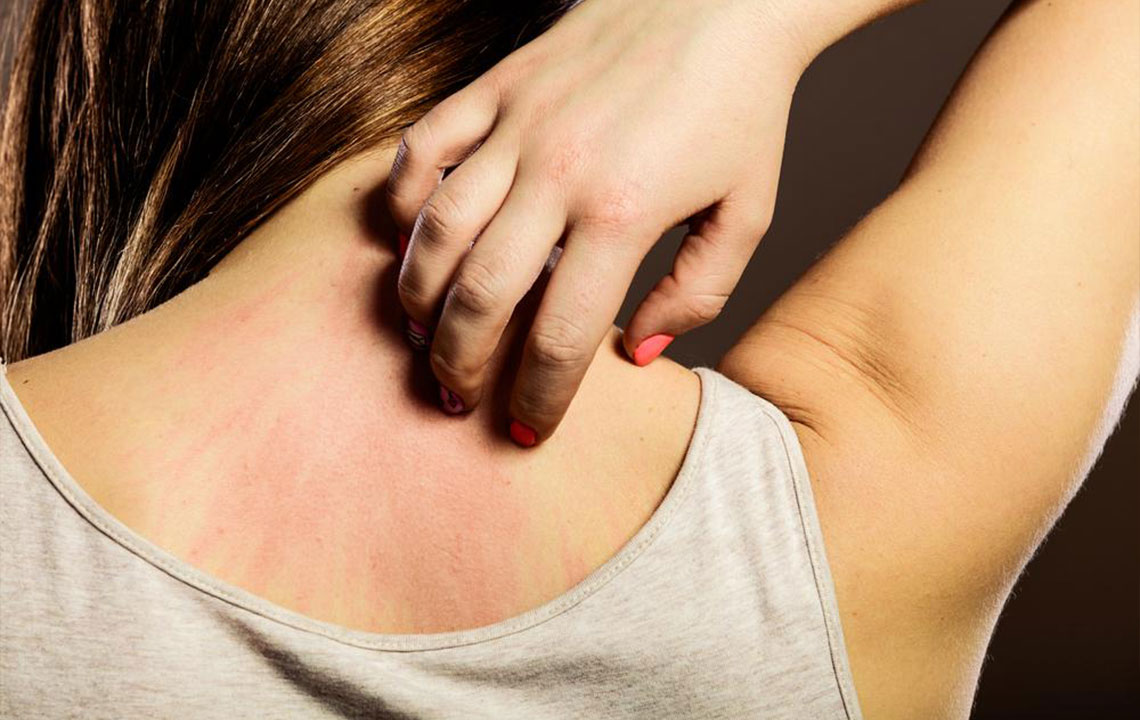6 Natural Ways for Instant Relief from Itchy Skin

If you’re someone who has the urge to scratch the skin regularly, then you have itchy skin. It is a common problem and it can be mild as well as severe. In some cases, they can be intensely aggravating and could affect your day to day activities. There are some who have trouble sleeping due to itchy skin.
The main cause of itchy skin are allergic reactions, infections, dry weather, detergents and soaps, insect bites and in some cases, it can be the side effect of certain medications. Scratching yourself can give you relief at the moment, but it is proven that excessive scratching can cause further complications.
It is best that you consult a medical professional if you have intense symptoms. Mild cases of skin itching can be cured at your home. If you want to know how to treat itchy skin with simple home remedies, read on.
Clay
Clay is one of the best remedies to treat itchy skin. It’s become popular over the decade because of its skin healing properties. It can cure other types of skin problems such as acne.
Clay is also useful in healing venomous stings and bites from bees, spiders, and wasps. Applying clay on the skin helps in extracting the venom out of the skin, thus providing a soothing and a relaxing effect. It also helps in quick healing of the sting.
Researchers suggest that untreated virgin clay, when applied to the itchy skin, can provide quick relief. You can do so by mixing it in a bowl with filtered water, to obtain a creamy mixture. Apply the mixture directly to the affected area. Let the mixture dry on the skin and then peel it off. Repeat this procedure throughout the day at regular intervals for fast relief.
Apple cider vinegar (ACV)
Apple cider vinegar is one of the liquids that boast a number of healing properties. Treating itchy skin is one of them. ACV has a lot of antimicrobial, antibacterial, and antifungal properties in it. It can also be used as an effective antiseptic. It helps in relieving itching, that is commonly associated with dry skin. There are two methods in which you can use ACV to treat itchy skin.
Method 1 : You can take raw apple cider vinegar by adding a few drops on a cotton swab or ball and apply it directly to the affected area. (It is important to note that this method works best with raw, organic, and unfiltered ACV.)
Method 2 : Add a few drops of organic ACV into a bucket of water and use it for bathing. Repeat this regularly during baths, till the itching reduces.
If you’re using clay to treat itchy skin, you can use ACV instead of the filtered water to obtain the creamy mixture. You can then apply it to reap the benefits of both the skin healing agents.
Basil leaves
There are two compounds known as camphor and thymol that are present in basil leaves. They are effective in treating itchy skin. If you’re wondering how to treat itchy skin, then basil leaves are one of the best choices. Basil leaves are recommended for people who can’t resist the urge to scratch. Using them suppresses the urge.
Peppermint leaves
You might have seen elders using peppermint leaves to treat bug stings and bites. Using peppermint leaves provide a cooling sensation in the area that is affected. The best way to use peppermint leaves for treating an itchy skin is by taking few leaves and rubbing them directly on the skin. Make sure to wash the leaves before doing so.
Another way to use peppermint leaves is by crushing them and adding them to water. Freeze the mixture to make ice cubes. You can then use the ice cubes to rub on the affected area. This provides additional cooling and a soothing sensation.
Aloe vera
It is almost impossible not to mention aloe vera when it comes to treating skin problems. It is well known for its super-fast healing action for sunburns and other kinds of rashes. It helps in soothing the skin by relieving irritation and swelling. It’s easy to grow the plant in your home.
You can take a leaf from the plant, cut it open and scoop the gel and apply it directly to the affected area. You can also keep the gel inside a refrigerator and store it for up to 7 days.
Fruit peels
Rubbing the affected area with banana peels or the rind of watermelon is also one of the recommended choices for treating itchy skin. Make sure to use them indoors because using them outside may attract insects and bugs!
If the condition persists even after trying all remedies, it is best to consult a doctor.


